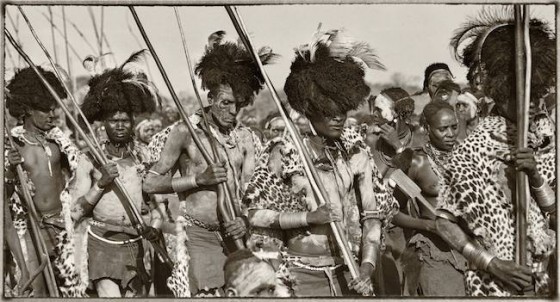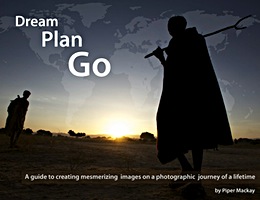
One of the most important steps for you to advance your photography is to have your work reviewed. One on one targeted feedback on your images from talented professionals can help shape your future as a photographer and will provide invaluable business connections.
Don’t focus on the fear of showing your work and having it criticized; see this as an incredible opportunity to get first hand information. This is an opportunity to have one on one time with an individual whom you are not likely to secure an in-person meeting with outside of a review event. Think about it, you will be sitting in front of this person one on one for twenty minutes. If you ask them a question, they are on the spot to answer it. I have scheduled reviews solely to pick a persons brain, so to speak. Now you must be clever and respectful on how you do this, as first impression are very important. You should have a strong portfolio if you are going to sit in front of an editor of a major publication, even though your sole intention is not necessarily for their opinion of your work.
When you sit down, present your business card as you introduce yourself. Let them know you would like to leave enough time at the end of the review for a few important questions. The questions can range from: how do I price my work appropriately, what is the best way to contact an editor directly or the owner of a gallery, what type of presentation or marketing stagey would draw a response from you, when is the best day and time to send an email that will get noticed? Remember, information is power!
A reviewer can provide creative guidance for works in progress, as well as marketing advice for completed projects. This will help you explore the marketability and business opportunities for the type work you are producing. Most events that host professional portfolio reviews have a variety of reviewers from different backgrounds. They usually offer reviews for all levels of photographers. There are two great venues coming up that offer theses professional reviews as part of their event.
The Nature Photography Summit hosted by NANPA (Feb 29-Mar2) . This is a great event and they have 20 reviewers. If you are a nature/wildlife photographer that wants to explore making a business out of your photography, this is the best investment you can make! Here is the link to the portfolio & editorial reviews- I also urge you to explore the entire program and the list of speakers.
The palm Springs Photo Festival (Apr 28-May3) is an event that is focused around having the best reviews in the industry. This event is not focused specifically around nature/wildlife and the reviews are geared for experienced photographers. In the past they have had the editors of National Geographic, Outdoor Photographer, PDN and the curators from such venues as the Annenburg space of photography, Fahey/klein, and Peter Fetterman Gallery. This event is held on the west coast in spring and is part of the PDN event held in NY in the Fall. Here is the link to the reviewers that will be at this event.
Below are some Do’s and Don’ts that I have put together from both of these venues as well as from my own experience.
Do’s
Limit your main portfolio to 20 solid images
Be honest with your self about the level your work is at. If you need another year of shooting before you start showing your book to top editors and art directors, sign up for reviews that will help get you to that level.
Take reviews from those whose credentials indicate their critique will be most valuable for you, may lead to work, or be a valuable connection in the future.
Research your reviewers and make sure your work is relevant to their area of expertise. Learn about what they do so when you sit down you may open with “ I’ve been following your magazine for years and feel my work would ad value to the publication” or “ I would love your feed back on my book project and recommendations for colleagues in the industry who may respond to my style of work”
Have a purpose for each review and communicate it to the reviewer. Have 1-3 specific questions ready, that you want to ask.
Invest in a proper portfolio/book. If you are reviewing with an art buyer, stock agent or editorial editor, then most likely the end out put of your work will be in print. Show them how great your work looks in print. You have 20 minutes to impress them. You will look more professional and it will give you an advantage over the photographers showing up with only a laptop or ipad. Do bring a lap top with a few solid back up portfolio’s, your review maybe interested in seeing more of your work. An ipad picks up too much glare reflecting everything; don’t show your work on one in a review session.
Have a well-printed leave behind. Invest in a graphic designer to help you create something that looks professional. You will be able to use this in marketing your work, so this is not a one-time investment. It is very easy to print small quantities these days and if you create a post card size you can use this to mail to potential clients. However, don’t force your leave behind on the reviewer. They may have several reasons they do not want to take it. It could be as simple as they don’t want the extra “stuff/clutter” in their lives. They will already have your contact information on your business card.
Don’t
Don’t make excuses for your work such as: “ I didn’t bring my strongest work” (why not?) “I didn’t have time to put together much, but this should give you an idea” (would you want to hire this person or trust them with a deadline?), “I just found out about this event”. If you are not ready, do not go to a review.
Don’t argue with constructive criticism. The people looking at your work have years of experience. They are going to critique your work to help you understand what you need to do to improve the quality of your work, so you can compete on the level you are striving for. Listen to what they have to say and process it later, but don’t tell them they are wrong.
One last tip
Most reviewers are there to help and will be kind in the way they deliver their criticism. However, there are a few editors and curators that can be tough and brutal. The best way to prepare for a tough situation is to go the review area in advance. See who is sitting with your reviewer. When they exit the area, ask them about how it went and how the reviewer treated them. If they tell you they were tough, you will be prepared and not become defensive during your review. If you sign up for multiple reviewers, ask your first reviewer about the other reviewers on your list. This strategy can be key for tough reviewers. When they see their harshness does not rattle you, they know you are professional enough to handle this extraordinary competitive, demanding, industry
Good Luck
If this was helpful to you, please share it.






Excellent advice Piper! I think it can be easy to fall into the trap of taking the critical feedback in the context of I’m not good enough. There is a big difference between that and the context of “I can improve my pictures by doing x, y, z.” I have to keep this distinction in mind frequently.
Full color cards, or cards that use many colors, are printed on sheetfed presses as well; however, they use the CMYK (cyan, magenta, yellow, and black) four-color printing process. Screens of each color overprinted on one another create a wide gamut of color. The downside to this printing method is that screened colors if examined closely will reveal tiny dots, whereas spot color cards are printed solid in most cases. Spot colors should be used for simple cards with line art or non-black type that is smaller than 5 points.:
Stay in touch
<http://www.caramoan.ph